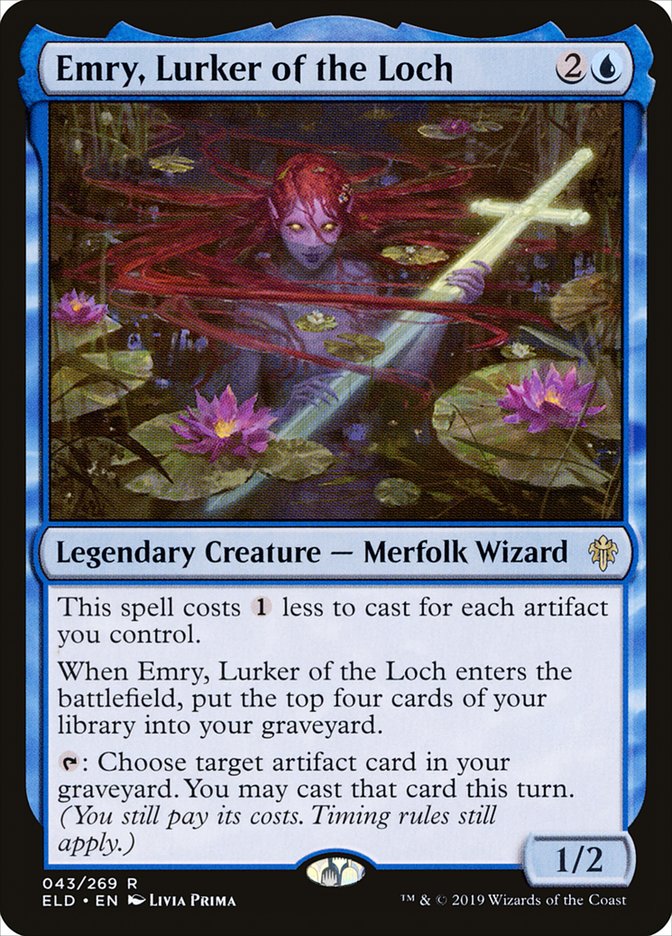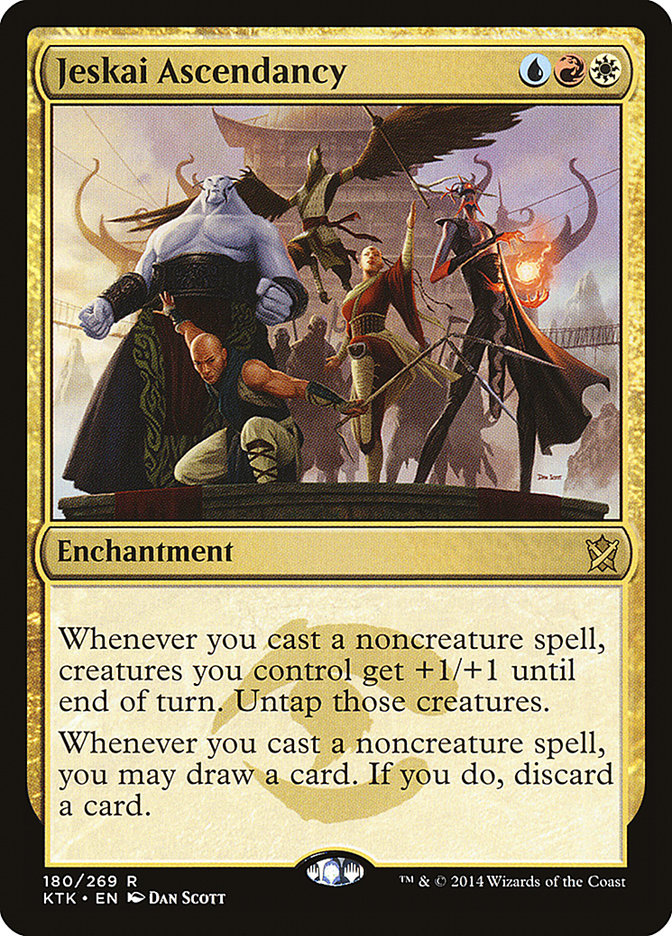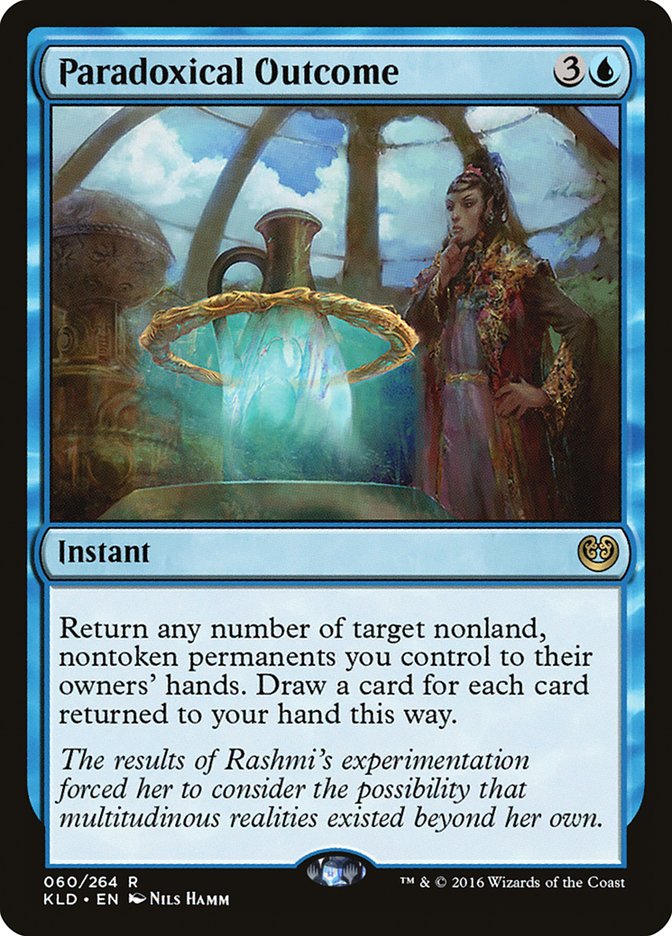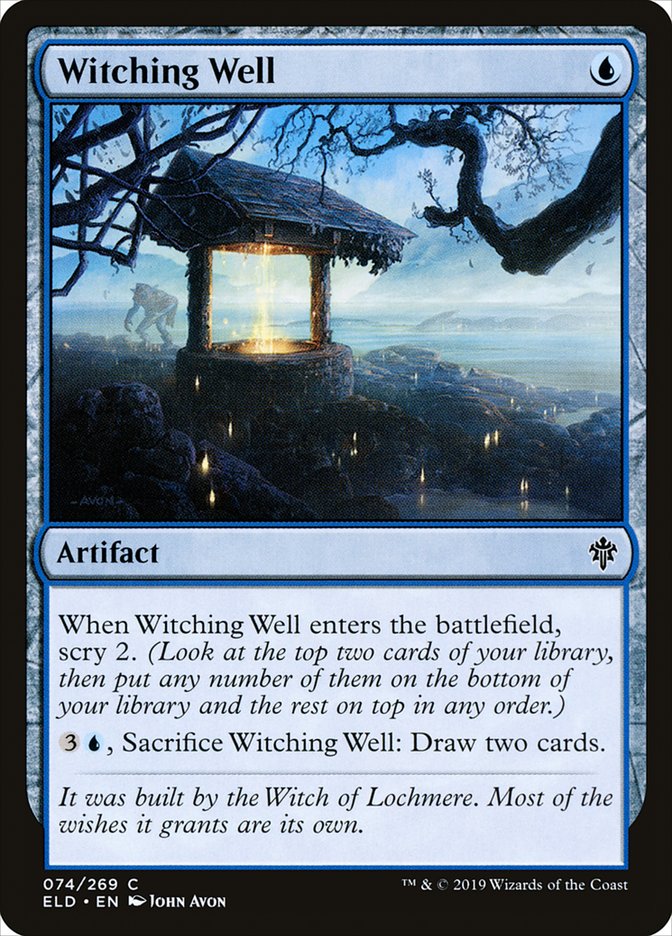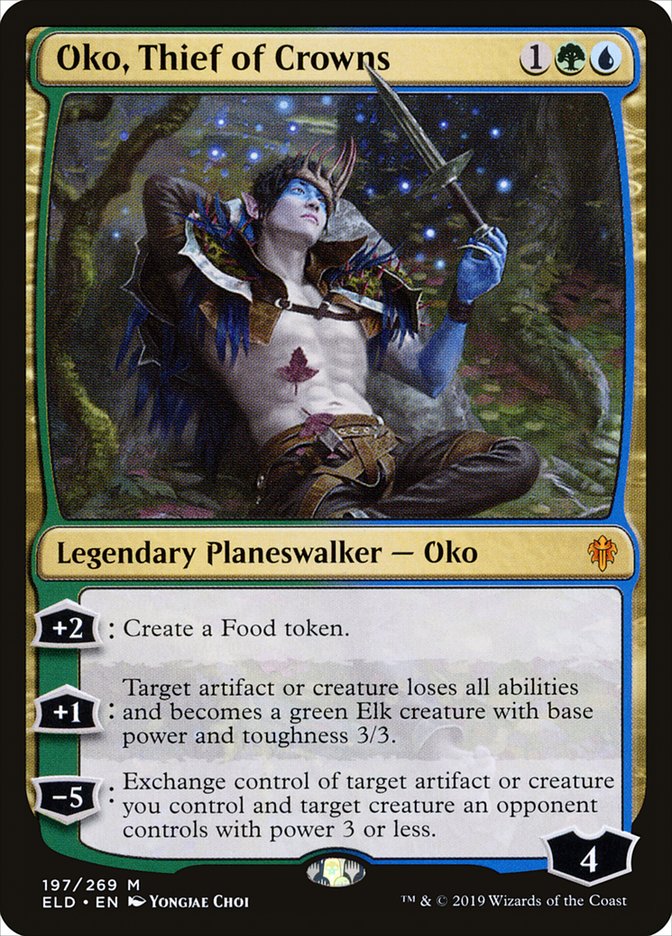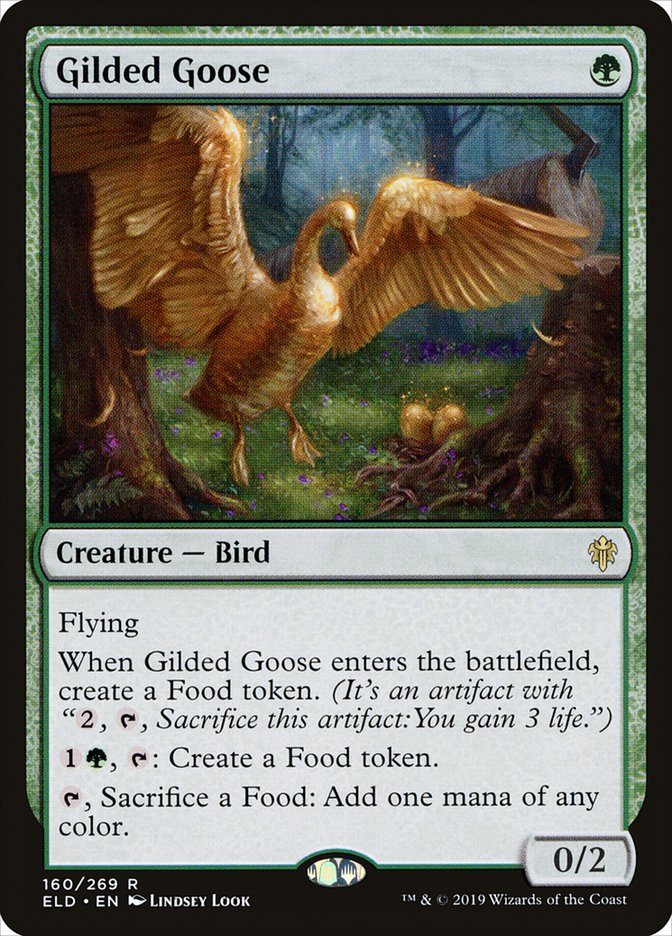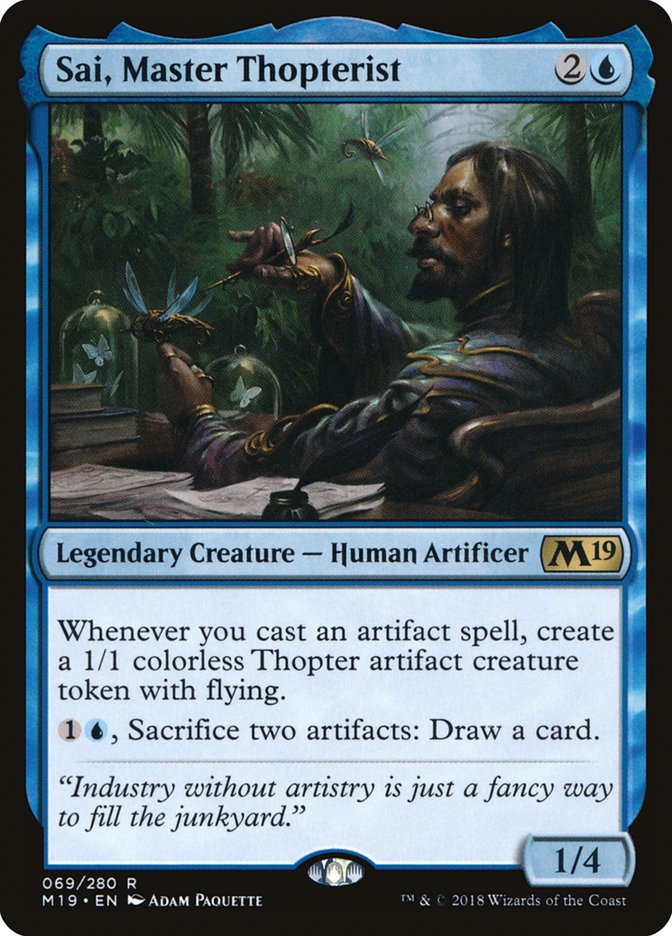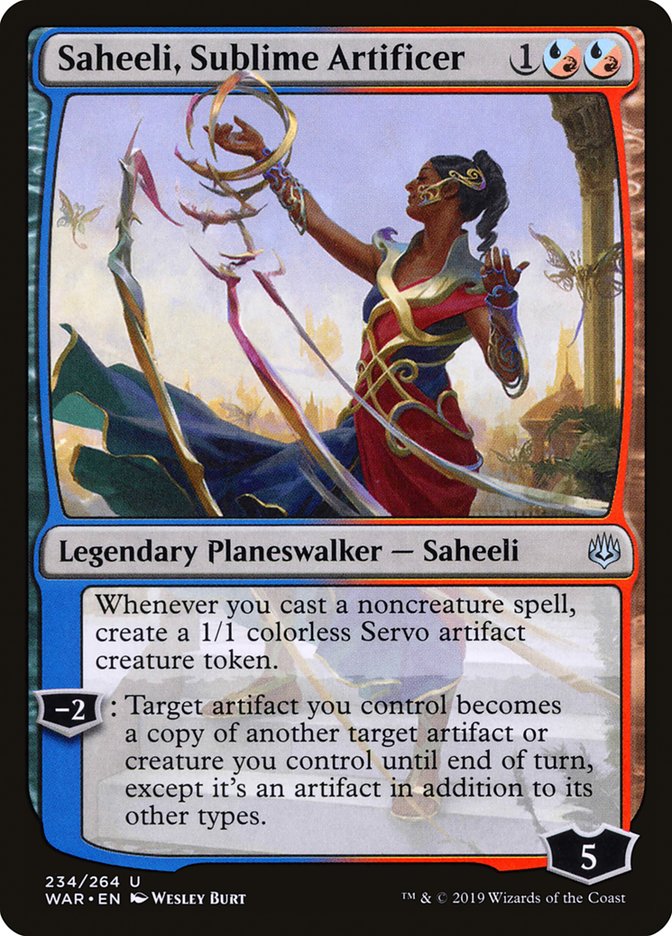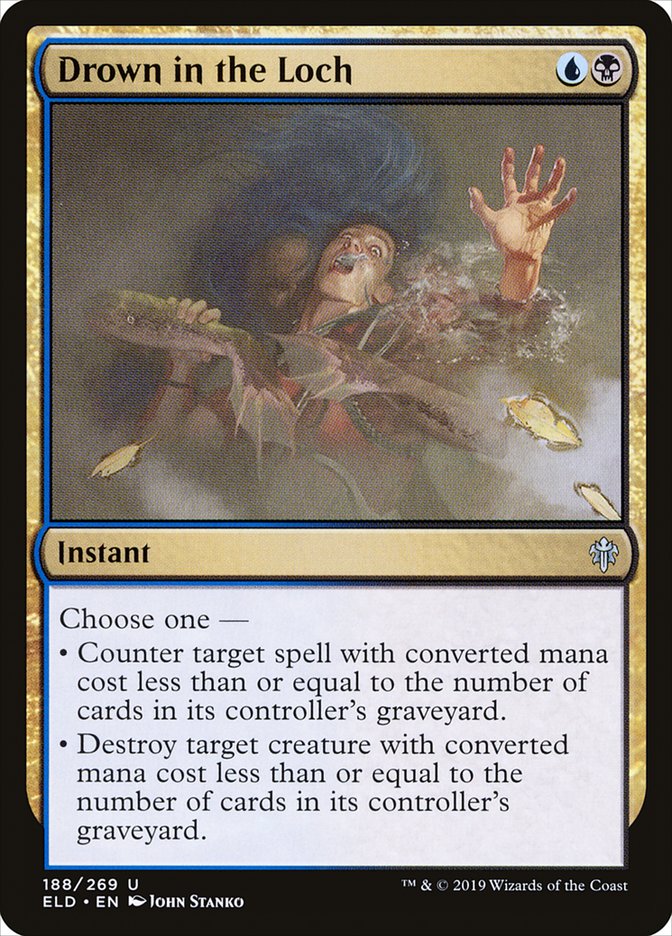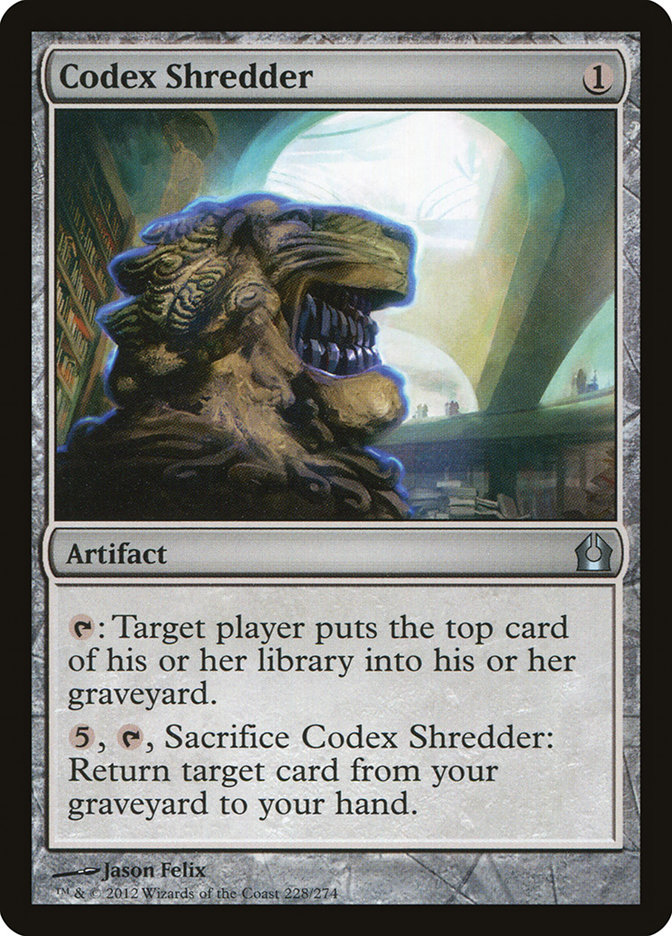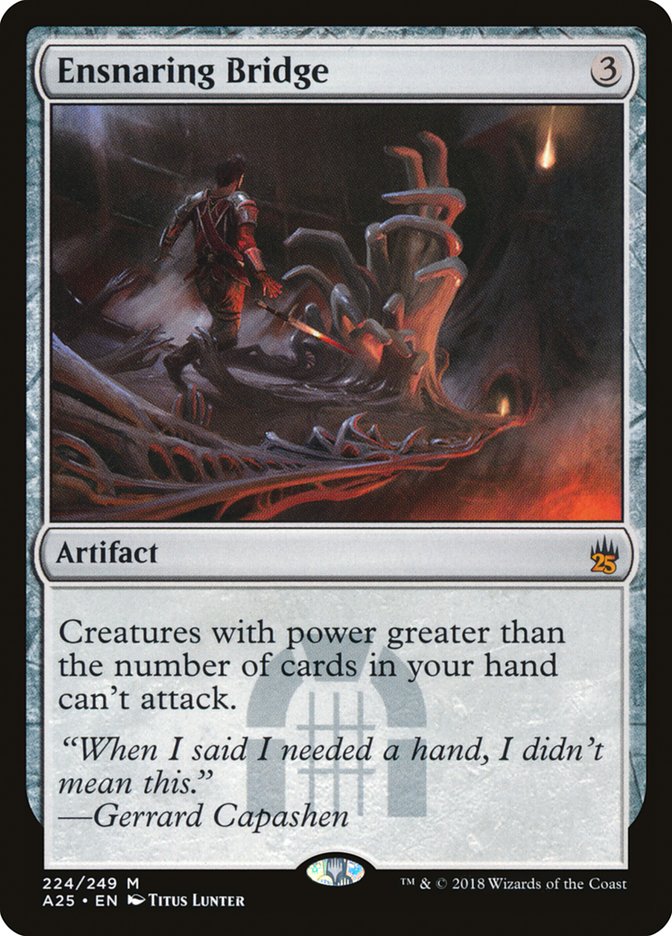When I haven’t been playing Mystic Sultai in Modern, I’ve been playing Urza, Lord High Artificer, and today I want to discuss what’s happened with this card in Modern, as we as a community are very much still figuring it out. First, we had Whirza:
Creatures (7)
Lands (20)
Spells (33)

There was some disagreement about which and how many colors this deck would play, but the idea was to use Whir of Invention and either Goblin Engineer or Stoneforge Mystic to find Thopter Foundry and Sword of the Meek, with Urza to go infinite. For a while, this was the only way people played Urza, such that when I started playing Paradoxical Urza, a deck with no two-mana creatures, Sword of the Meek, Thopter Foundry, or Whir of Invention, people still called my deck Whirza because that was just the name they had for Urza.
Anyway, before Throne of Eldraine was released, Urza Outcome gained momentum. This was also a combo deck, but the combo was cheap artifacts with Sai, Master Thopterist or Saheeli, Sublime Artificer and Urza to use cheap artifacts to generate mana to chain Paradoxical Outcomes, sometimes using Sai or Urza’s abilities as needed to find them, then using some dedicated kill condition most of the time – I’ve seen any of Grinding Station, Mirrodin Besieged, Nexus of Fate, and Aetherflux Reservoir.
My preferred version looked like this:
Creatures (6)
Planeswalkers (2)
Lands (18)
Spells (34)

The sideboard changed around a lot. Other people had builds with different colors. Teferi, Time Raveler was particularly popular. Personally, I think my maindeck was very good, and my sideboard wasn’t great, and I’m not sure what the best colors were.
Then Throne of Eldraine came out and everyone started playing four copies of Emry, Lurker of the Loch in every Urza deck. I currently believe that’s likely a mistake, but it’s become almost universal.
Some players just added Emry to Paradoxical Urza, and others added Emry with Jeskai Ascendancy. My belief is that the versions with Jeskai Ascendancy are much worse against disruption and much less consistent, in that their curves are worse than for the Outcome deck above, and they have fewer artifacts, and they’re generally easier to disrupt because they lean more on Emry staying alive. In exchange, the Ascendancy builds have draws that can kill on Turn 2. As I understand it, players who play the Ascendancy version tend to prefer it because they believe the version without Ascendancy is too slow against other unfair decks, and Ascendancy is necessary to race the format.
The next development was the discovery that Oko, Thief of Crowns is generally absurd against almost everyone, which came with a desire to play it in the maindeck rather than only as a sideboard card. This led to the creation of Urza Midrange, which Zan Syed used to win Raleigh-Durham Regionals this weekend.
Creatures (14)
Planeswalkers (4)
Lands (19)
Spells (23)

The reasoning here is that combo Urza wasn’t the best combo deck in the format, and other people were just trying to kill them first, so rather than trying to be a combo deck, they’d just build the best midrange deck instead, and use counterspells and sideboard disruption to trade resources while using Urza, Emry, Tireless Tracker, and Oko, Thief of Crowns as card advantage engines.
One important innovation that I want to point to here is the use of two Mystic Sanctuaries with only five instants and zero sorceries in the maindeck. Partially, this is because the interaction with Cryptic Command is that good, particularly given the very low cost of including Mystic Sanctuary, especially when you already want a high Island count because you’re trying to get snow mana for Arcum’s Astrolabe, but also, having access to Mystic Sanctuary makes the instants and sorceries in your sideboard a lot more powerful, since you get to cast them multiple times. There are likely a lot of decks where the starting 60 can’t use Mystic Sanctuary well that should still be playing it because it works so well with their sideboard cards.
I played a similar Urza Midrange deck at Regionals this weekend, but in hindsight, I think my version was worse, and I think Zan’s build is very close to the optimal way to approach this strategy. I’ve spent the last few days looking at the core of:
Creatures (12)
Planeswalkers (4)
Spells (18)

…and trying to figure out what the best cards to finish out the deck are. That core with a minimum of eighteen lands leaves me with eight slots to play with. Sometimes I’ll trim some cards from that core, but it’s generally felt bad to do so.
After playing with several variations of this shell, I’m coming to realize that I’m just not that into Emry. Every now and then you get lucky and find an Engineered Explosives or sideboard Damping Sphere with Emry and sometimes recurring Engineered Explosives is great, but for the most part, your plan is just to loop Mishra’s Bauble with Emry, which means a Turn 1 Emry draws you a card that you can’t use until your third turn and continues drawing cards from there. Because the deck has so many legendary cards and so much air, the cards you draw aren’t that impactful and cards drawn late are much weaker than cards drawn early. At the same time, Emry offers vulnerabilities to cards that otherwise aren’t great against you, like Lightning Bolt, and leaves you very exposed to Kolaghan’s Command.
Moving forward, my inclination is to move away from Emry. I think Paradoxical Outcome was great and that people started disliking it because they built their decks badly, and that it can disrupt faster combo decks as well as the midrange versions can if that’s a priority.
I think this is the next version I want to try:
Creatures (9)
Planeswalkers (5)
Lands (18)
Spells (28)

I had concerns about replacing Serum Visions with Witching Well because the well leaves you down a card until you either crack it or pick it up with Paradoxical Outcome, but with the addition of Gilded Goose, I think I can expect to hit four mana early enough to get my investment back by the time I need it, so I want to start by pushing those to see how it goes.
There’s definitely a lot of experimental stuff going on here, but the things I’ve liked most in these decks are either casting Oko on Turn 2 or going off with Paradoxical Outcome, so I’ve built my deck to do those things.
This version is only two colors, which means I don’t get to sideboard a one-mana removal spell. Any other color would give me a good option: black offers Fatal Push, red offers Galvanic Blast, and white offers Dispatch, which I think is better than Path to Exile. The issue is that I want to try eighteen land (though nineteen could be right), and I’d like sixteen of them to give me access to snow mana (though you can get away with fifteen); this means I get two non-snow lands, and I’m using Mystic Sanctuary and Breeding Pool.
The fact that I’m using Mystic Sanctuary means I’d like to avoid off-color basics and I don’t want off-color multicolor lands because they cut into my snow count, so it would be hard for me to cast cards of a splash color in the sideboard. I could fix this by adding a land, obsessing less about Mystic Sanctuary, dropping my snow count, or adding a land to the sideboard, and any of these solutions would be reasonable. However, Wicked Wolf actually impressed me in the few games I’ve played with it, and I prefer counterspells to discard at the moment, so my inclination is to try to stay straight Simic.
Regardless of whether this build is correct, I think the meaningful takeaway is that I don’t like Emry unless you’re either abusing the card with Kethis, the Hidden Hand or Jeskai Ascendancy, or protecting it with Thoughtseize or maybe counterspells.
I should also address Gilded Goose directly. Some people have been critical of the idea of playing Gilded Goose in Modern, since you’re allowed to play Noble Hierarch and Birds of Paradise. This deck wouldn’t want those creatures and Gilded Goose isn’t trying to do what they’re doing. Gilded Goose gives you an artifact, so it turns on Mox Opal, which makes it much more explosive. The total cost of cards in this deck is very low because so many cost zero, so you’re not looking to spend a lot of mana over the course of the game, or rather you are, but you can get it from Urza. You’re really just looking to cast the one high-impact card you draw as quickly as possible.
You also don’t want to validate opposing removal, but the Food token has enough value that you’re happy with the exchange if the opponent Lightning Bolts your Gilded Goose, where it would be a disaster if that happened to a Noble Hierarch because you need a lot of material around to take advantage of Paradoxical Outcome, so trading cards early is bad (yes, the Food token doesn’t work with Outcome, but the deck still uses it well enough with Opal, Oko, and Urza that you’re happy with a trade that leaves you even on cards and mana with your opponent and up a Food). Also, Gilded Goose’s ability to generate a pile of Food which all become mana rocks when you cast Urza is a big deal.
Another thing to pay attention to is that we have so many absurd legendary cards that play well with Mox Opal between Sai, Master Thopterist; Saheeli, Sublime Artificer; Emry, Lurker of the Loch; Oko, Thief of Crowns; and Urza, Lord High Artificer. There are still a lot of combinations to explore. Maybe there’s merit to just playing two to three copies of all of them to fit more artifacts and get punished less by the legend rule, and maybe even Urza isn’t automatically the best one in every configuration. Urza is probably the most powerful (and the most expensive), and it’s good at going big – it gives you an enormous amount of mana, which is broken with a mana sink like Thopter Foundry / Sword of the Meek or Paradoxical Outcome, but if we’re exploring more midrange spaces that don’t use the mana as well, it might not necessarily be the best fit.
Specifically, Urza is good in big games. Urza wants a lot of permanents on the battlefield and can go over the top of whatever your opponent’s doing. This is the opposite of Emry. Emry wants small games where the opponent is less likely to have an answer and tapping to draw a card is more likely to swing the game. This means Emry pairs better with Thoughtseize.
There’s something to explore here:
Creatures (4)
Planeswalkers (3)
Lands (18)
Spells (35)

This is an unusual twist on Lantern Control that takes advantage of the fact that Drown in the Loch is a counterspell that can’t get stuck in your hand when you’re trying to hide under Ensnaring Bridge. Codex Shredder helps enable your Drown in the Loch and helps fill your graveyard with artifacts for Emry to return. Witching Well is a cheap artifact that lets you empty your hand if you need to with Ensnaring Bridge that doubles as a card draw spell when you’re trying to play a control game without the risk of getting trapped in your hand. The fact that you have counterspells means you’re leaning on the Lantern lock less, so there’s only a single Lantern of Insight, but you have Whir of Invention and Emry to help find it.
Oko, Thief of Crowns is fantastic with Ensnaring Bridge, since it means you can ignore everything you turn into an Elk and it can make Food to stop you from getting burned out.
I’m really sad that I don’t think it’s right to use Mystic Sanctuary here. I think the life loss from trying to enable with fetchlands just costs too much for this archetype, and you already have access to your graveyard thanks to Codex Shredder. Note that Codex Shredder with Emry lets you recycle Drown in the Loch, which is slow but extremely powerful.
My earlier builds of this archetype included Urza, but I’ve since realized that that’s just the wrong direction here. A similar deck could exist without any of the prison pieces that was just using Emry in a control shell, but I think it gets hard to find enough artifacts to make Emry a reliable source of card advantage.
Ultimately, I think Urza’s the stronger card, and that the next correct move in the evolution of Urza based strategies is to cut Emry, but Oko remains very much the truth.


